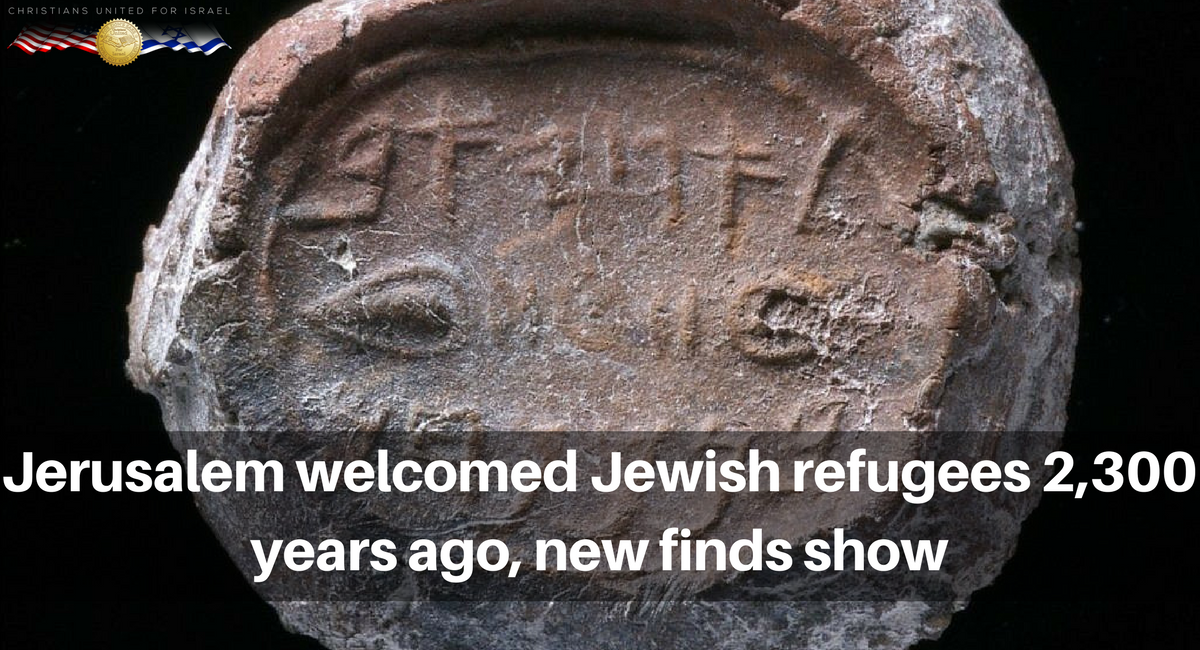Jerusalem welcomed Jewish refugees 2,300 years ago, new finds show

Millennia ago, Jerusalem may have opened its doors to thousands of refugees from the north of the country. A new cache of First Temple bullae (sealings) discovered in an excavation at Jerusalem’s City of David shows a mixture of names from the Kingdom of Israel and Judah used on official bureaucratic correspondence dating from after the fall of Israel at the hands of the Assyrians in 720 BCE.
The dozens of clay imprints were used on letters and documents which were bound by string and sealed by wet clay pressed with the sender’s mark or name. The impressive trove was discovered at recent digs uncovering three Late Iron Age buildings frozen in time by the destruction caused by the 586 BCE Babylonian siege. The discovery was made by a team of Israel Antiquity Authority archaeologists led by co-directors Dr. Joe Uziel and Ortal Chalaf.
Among the dozens of bullae is a rare find of an intact sealing, bearing the name “Ahiav ben (son of) Menahem,” referring to two kings of Israel but found in the capital of the Kingdom of Judah, Jerusalem.
Miami-native Uziel immigrated to Israel 25 years ago at age 18. After earning his degrees at Bar-Ilan University, he has worked with the IAA for the past six years on digs in the City of David and in the Western Wall Tunnels.
The bullae, Uziel told The Times of Israel on Monday, were discovered in recent months on the eastern slopes of the City of David, right outside of the entrance to the Warren Shaft, during his excavations of the three buildings “that were probably constructed in 8th cent BCE and destroyed in the Babylonian destruction.”
Uziel said the buildings have offered up a wealth of finds, including these dozens of bullae, which will be temporarily exhibited this week at an archaeology conference at the City of David.
Read More: Times of Israel
